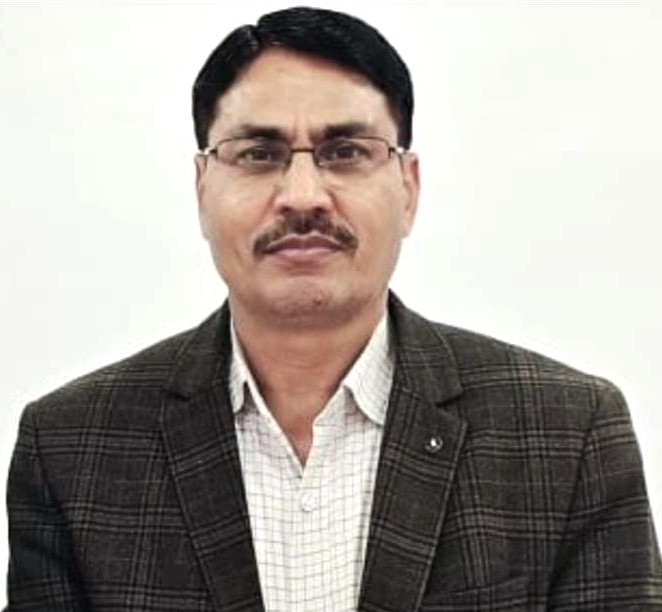The following components are supported under JJM Efforts should be made to source funds from different sources / programmes and
convergence is the key • Development of in-village piped water supply infrastructure to provide tap water
connection to every rural household • Development of reliable drinking water sources and/ or augmentation of existing
sources to provide long-term sustainability of water supply system • Wherever necessary, bulk water transfer, treatment plants and distribution network to
cater to every rural household • Technological interventions for removal of contaminants where water quality is an
issue • Retrofitting of completed and ongoing schemes to provide FHTCs at minimum
service level of 55 lpcd; • Greywater management • Support activities, i.e. IEC, HRD, training, development of utilities, water quality
laboratories, water quality testing & surveillance, R&D, knowledge centre, capacity
building of communities, etc.
Jal Jeevan Mission is to assist, empower and facilitate: . States / UTs in planning of participatory rural water supply strategy for ensuring
potable drinking water security on long-term basis to every rural household and public
institution, viz. GP building, School, Anganwadi centre, Health centre, wellness
centres, etc. . States / UTs for creation of water supply infrastructure so that every rural household
has Functional Tap Connection (FHTC) by 2024 and water in adequate quantity of
prescribed quality is made available on regular basis. . States / UTs to plan for their drinking water security . GPs / rural communities to plan, implement, manage, own, operate and maintain their
own in-village water supply systems . States / UTs to develop robust institutions having focus on service delivery and
financial sustainability of the sector by promoting utility approach . Capacity building of the stakeholders and create awareness in community on
significance of water for improvement in quality of life . In making provision and mobilization of financial assistance to States/ UTs for
implementation of the mission.
Every rural household has drinking water supply in adequate quantity of prescribed quality
on regular and long-term basis at affordable service delivery charges leading to improvement
in living standards of rural communities.
The broad objectives of the Mission are: . To provide FHTC to every rural household. . To prioritize provision of FHTCs in quality affected areas, villages in drought prone
and desert areas, Sansad Adarsh Gram Yojana (SAGY) villages, etc. . To provide functional tap connection to Schools, Anganwadi centres, GP buildings,
Health centres, wellness centres and community buildings . To monitor functionality of tap connections. . To promote and ensure voluntary ownership among local community by way of
contribution in cash, kind and/ or labour and voluntary labour (shramdaan) . To assist in ensuring sustainability of water supply system, i.e. water source, water
supply infrastructure, and funds for regular O&M . To empower and develop human resource in the sector such that the demands of
construction, plumbing, electrical, water quality management, water treatment,
catchment protection, O&M, etc. are taken care of in short and long term. . To bring awareness on various aspects and significance of safe drinking water and
involvement of stakeholders in manner that make water everyone's business


The evolution of sanitation in India is a rich tapestry woven with ancient wisdom and modern initiatives. From the Sindhu Valley civilization's innovative toilet construction to contemporary nationwide movements, the journey reflects a commitment to improving public health and hygiene. Despite historical innovations, India grappled with sanitation challenges, particularly in rural areas, affecting millions. In 2014, only 39% sanitation coverage was achieved, impacting vulnerable demographics, notably women and children. Recognizing the urgency, various initiatives were launched to address this pressing issue. • Development of in-village piped water supply infrastructure to provide tap water
connection to every rural household Swachh Bharat Mission -Grameen (SBM): Phase II (2019-2025) Having achieved the ODF status, SBM-G Phase II was launched with the objective of achieving Sampoorn Swachhata, i.e., sustaining the ODF status and managing solid and liquid waste by 2024-25 and transforming all the villages from ODF to ODF Plus Model. The key objective of SBM-G Phase II to: • Sustain the ODF status of villages • Improve the level of cleanliness in rural areas through solid and liquid waste management activities, making villages ODF Plus. This includes
The total estimated outlay of SBM(G) Phase-II is Rs.1.40 lakh crores which is to be dovetailed through convergence between different verticals of financing and various schemes of Government of India and State Governments.
The ODF Plus progress is being captured on SBM(G) MIS in following categories:
• Aspiring: The village which is sustaining its ODF status and has arrangements for Solid Waste Management or Liquid Waste Management.
• Rising: The village, which is sustaining its ODF status, and has arrangements for both Solid Waste Management and Liquid Waste Management.
• Model: The village which is sustaining its ODF status; has arrangements for both Solid Waste Management and Liquid Waste Management; observes
visual cleanliness i.e. minimal litter, minimal stagnant wastewater and no plastic waste dump in public places and displays ODF Plus IEC messages

